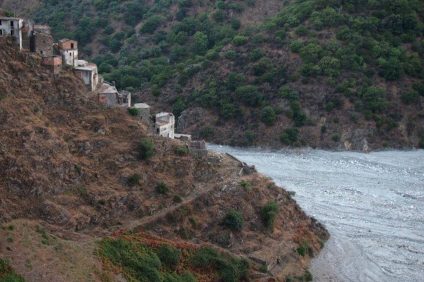One of the villages to visit absolutely in the wide and scenic province of Trento is undoubtedly Vigo di Fassa. Site at approx 1385 meters above sea level, boasts a small number of inhabitants. It is one of those places that lives in peace, which allows you to breathe the well-known "good air", as well as to disconnect a little from the rest of the world.
It was once nothing more than a small settlement. The name also makes it clear, considering how Vigo comes from Vicus, which means village. Site under the Rosengarten, enjoys the sunniest area of the Val di Fassa. A rural identity that we try to protect as much as possible, even if urbanization has overwhelmed this paradisiacal area too.
Vigo di Fassa: the origins
This splendid village has its roots in medieval times. In this period we have the first inhabited centers, according to a modern conception. The first human traces in this area, however, date back to Palaeolithic. Men who went up the Avisio stream. Taking a leap into the future, returning to the Middle Ages, there was a rapid growth that led to the incorporation of the town of San Giovanni, which is quite close.

A guarded element of that time is a monumental barn located next to the rectory of the village parish. The inhabitants lived for centuries on agriculture and livestock, enjoying a simple but flourishing life. This lasted until 1860, when the construction of the state road of the Dolomites brought the first tourists, mainly from Austria. It was in this period that new shelters were built, so as to satisfy the demands of sportsmen, such as mountaineers and hikers.
Skiing in Vigo di Fassa
This borough is a well-known ski center of the Val di Fassa district. Intriguing descents, made spectacular by the Dolomite mountains that surround the former village. These can also be reached with a modern cable car, which leads to the panoramic plateau of the Ciampedìe, starting point of many paths.

Every year there is no shortage of tourists interested in enjoying the ski slopes. All this has long been an integral part of the country's economy. The cable car departs from the city center, which makes the whole process very easy and within everyone's reach. In fact, no effort is required. If Ciampedìe is a skiers' paradise, the Passo Carezza lift is also very popular.
Museums to visit and more
It goes without saying that immersion in the wilderness, as well as skiing, are the main attractions. However, there are two museums not to be missed. The first is the Iadino di Fassa museum, which houses the collections ofLadin Cultural Institute. To reach it you need to go to the Tobià de la Pief barn, a medieval find of great interest. It is located near the rectory of the parish church of San Giovanni. The latter was consecrated in 1489 and was born from the ashes of a Romanesque church, founded at the time on a Carolingian chapel.

The second museum is that mineralogical Manzoni, which boasts more than 200 types of minerals, all collected by an alpine guide in Val di Fassa. A jump to the bell tower, whose spire reaches 67 meters in height. Inside there is a fresco cycle by Ruprecht Potsch, as well as paintings by David Solbach. Also worth visiting church of Santa Giuliana, built in the Gothic style and dating back at least to the early 1200s. Inside there is a carved wooden altar, made by Giorgio Artz in 1500.
Photo source in evidence: Bbruno, Public domain





